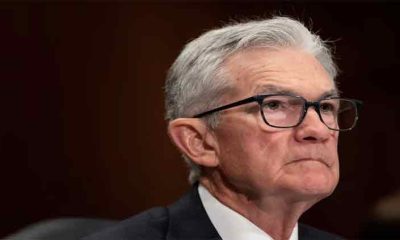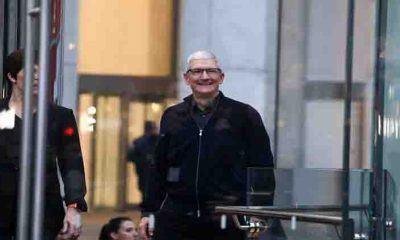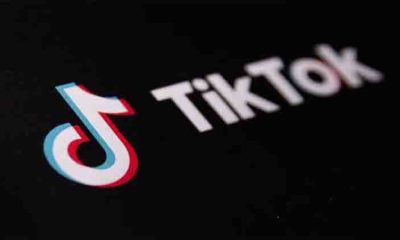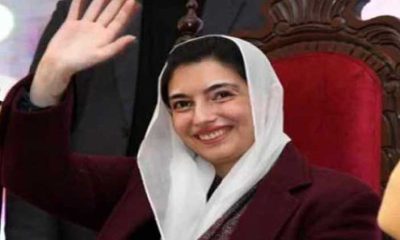The murder of George Floyd at the hands of Minneapolis police, and the fervent protests that erupted around the world in response, looked to many observers like the catalyst needed for a nationwide reckoning on racism in policing.
For more than nine minutes, a white officer pressed his knee to the neck of Floyd, a Black man, who gasped, “I can’t breathe,” echoing Eric Garner’s last words in 2014. Video footage of Floyd’s May 25, 2020, murder was so agonizing to watch that demands for change came from across the country.
But in the midst of the deadly coronavirus pandemic, economic uncertainty and a divisive US presidential election, 2020 ended without the kind of major police reforms that many hoped, and others feared, would come. Then, 2021 and 2022 also failed to yield much progress.
Now, three years to the day since Floyd’s murder, proponents of federal actions — such as banning chokeholds and no-knock warrants, as well as changing the so-called qualified immunity protections for law enforcement — still await signs of change.
“When people casually, and I think too frequently, say that there is some sort of racial reckoning that we’re in the midst of, I see no evidence of that,” Democratic US Rep. Ayanna Pressley, of Massachusetts, said during a recent press conference convened by a Black Lives Matter collective.
To be clear, racial justice activists and their champions in elected office haven’t slowed down. But the beating death of Tyre Nichols at the hands of Memphis police officers in early January underscored yet again just how long it’s taking to achieve meaningful change.
“I don’t play with words like ‘reckoning,’” Pressley said. “That needs to be something of epic proportion. And we certainly have not seen a response to the lynching, the choking, the brutality, (and) the murder of Black lives.”
Soon after Floyd’s murder, Minneapolis adopted a number of changes, including bans on chokeholds and neck restraints, and requirements that police try to stop fellow officers from using improper force. Minnesota lawmakers approved statewide police accountability packages in 2020 and in 2021, as well as tight restrictions on no-knock warrants just this month.
The city is still awaiting the results of a federal investigation into whether its police have engaged in a “pattern or practice” of unconstitutional or unlawful policing. A similar investigation by the state Department of Human Rights led to what it called a “court-enforceable settlement agreement” in March to revamp policing in the city.
The federal investigation could lead to a similar but separate agreement with the city called a consent decree. Police in several other cities already operate under such oversight for civil rights violations.
Activists say that Minneapolis has started to make critical changes, but that the work necessary to transform policing must continue.
Activists plan to mark the anniversary in Minneapolis with a candlelight vigil Thursday night at George Floyd Square, the corner where Floyd died. A festival at the square Saturday will celebrate change in Minneapolis.
Derek Chauvin, the white officer who killed Floyd, and the three other officers who failed to stop Chauvin at the scene, are all in prison. Chauvin was sentenced in state court to 22 1/2 years for second-degree murder. Two of the three other officers pleaded guilty to aiding and abetting manslaughter and received shorter terms, while the third officer was convicted of that count by a judge and awaits sentencing.
Chauvin also pleaded guilty to a federal civil rights charge, admitting that keeping his knee on Floyd’s neck resulted in his death. In that case, he received a concurrent sentence of 21 years. The three others were also convicted of violating Floyd’s rights and got much shorter sentences.
Around the world, protests against racial violence and police brutality erupted after Floyd’s murder, reigniting the Black Lives Matter movement. Videos circulated on social media of U.S. police using tear gas and less-lethal munitions like rubber bullets, which fueled calls for accountability. That accountability so far has largely come in the form of settlements in lawsuits.
New York City found 146 officers had committed misconduct at protests including excessive force and violence like one officer who drove a car into protesters. Independent reviews in Philadelphia, Minneapolis and Los Angeles also found those departments had mishandled their responses.
In some cities, a handful of officers were fired. Some have even faced criminal charges: In Austin, Texas, 19 officers were charged in a grand jury indictment. But few have been convicted.
Minneapolis has agreed to millions of dollars in settlements with people who alleged they were victims of excessive police force during unrest that followed Floyd’s killing, which included the burning of a police station. But few officers faced disciplinary action over their conduct.
There were immediate cries to defund the police — and instead fund public housing, infrastructure and mental health services. But Minneapolis voters rejected a ballot measure that had its roots in the movement to defund the police. It failed even in some heavily Black neighborhoods.
An AP review of police funding found that some municipalities made modest cuts that fell far short of activists’ calls.
In 2020, the George Floyd Justice In Policing Act, a piece of federal legislation, showed some signs of promise. It would ban chokeholds and no-knock warrants, like the one that enabled Louisville police to kill Breonna Taylor. It would also create a database listing officers who were disciplined for gross misconduct, among other measures.
The following year, the House passed it but the Senate failed to reach a consensus. However, in the most recent State of the Union address, attended by Nichols’ parents, President Joe Biden renewed his call on Congress to pass the bill.
Pressley, the Massachusetts congresswoman, joined a press conference last Friday with Black Lives Matter Grassroots, a national collective of chapters and local activists, to promote the Ending Qualified Immunity Act. Every year since 2020, Pressley has reintroduced the measure.
Over the last three years, George Floyd’s family members have appeared at rallies and spoken out against police violence. Within days of his brother’s death, Philonise Floyd testified at a congressional hearing about police reform.
While relatives and reform advocates urged for legislation changes, George Floyd’s youngest daughter, Gianna Floyd, met Biden at the White House in 2021. A photo of a Marine holding the door for the 7-year-old went viral.
New York City-based Terrence Floyd, who became an activist after his brother’s murder, planned to hold the third-annual memorial event at a Harlem church on Thursday evening. He has supported get-out-the-vote efforts and promoted music paying tribute to his brother.
“You have to have the faith that it will happen, because it didn’t happen overnight for Martin Luther King Jr. or Malcolm X. It didn’t happen overnight for Rev. Al Sharpton and Rev. Jesse Jackson,” he said about meaningful social change. “You can’t expect it to happen overnight for us, but it will happen.”
Post Views: 73

 Fashion3 months ago
Fashion3 months ago
 Fashion3 months ago
Fashion3 months ago
 Sports2 months ago
Sports2 months ago
 Sports2 months ago
Sports2 months ago
 Fashion2 months ago
Fashion2 months ago
 pakistan2 months ago
pakistan2 months ago
 World3 months ago
World3 months ago























